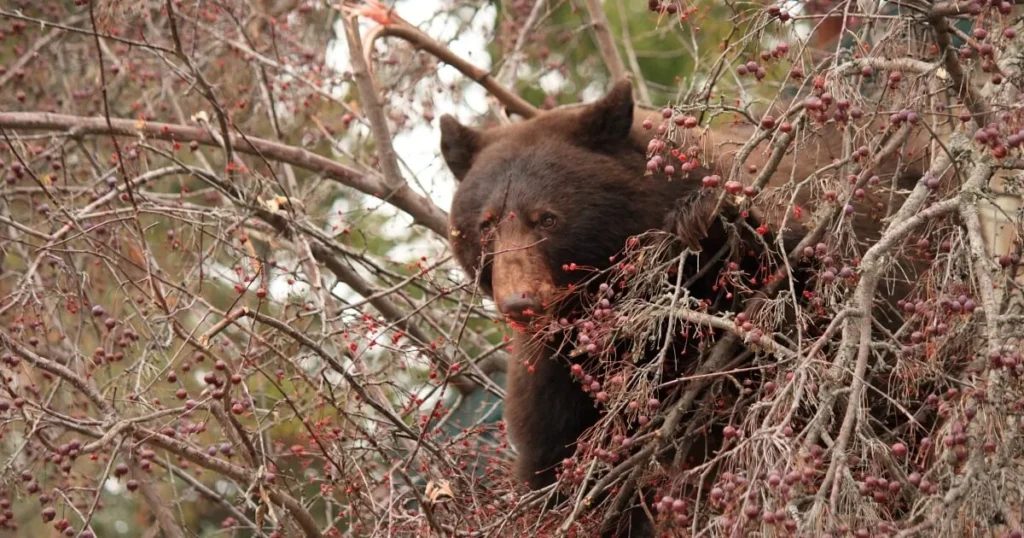
Photo by ceswan / Getty Images
Summer heat is hard to beat, but the formation of fruits and berries on trees across Canada are a welcome treat to many wild animals.
Fruiting trees are coveted for their ornamental beauty, hardiness in some areas, and, of course, delicious fruits. But these fruits can be a strong attractant for all species of wildlife – and that can lead to negative encounters. The Fur-Bearers have a few tips that can help manage these issues and ensure residents can still enjoy the fruits of their labour:
1 Know when your plants are ready for harvest. Getting ahead of the wildlife means knowing the right time to remove fruits and berries from plants, and how long the harvest may take. Since not all fruits on a single plant will ripen at the same time, and every fruit/berry has a specific timeline of when to harvest (before ripening is common for many), creating a simple calendar to follow can ensure you enjoy a harvest – and wildlife move along to find food elsewhere.
2 Clean-up fallen fruits and berries. The spattering of berries on a sidewalk or patio could be considered high-concept art, but typically it’s just messy. This mess can attract insects, rodents, and larger animals who may follow the rodents like foxes or coyotes. In areas with black bears this step is vital.
3 Ask for help if needed. Getting on a step ladder and reaching up for apples or mulberries isn’t practical for many people. Fortunately, there are often community groups (particularly in areas with black bears) that can help. If you’re not sure where to start, consider asking your local municipal representative, naturalist’s club, or looking for resources at your local library/community centre.
4 Follow municipal rules. Some communities will enforce rules surrounding certain types of planting as a part of their wildlife coexistence strategy. For example, Canmore, Alberta, doesn’t allow specific fruit and berry trees as they attract black bears into residential neighbourhoods, where negative encounters are much more likely. They even have a program that helps cover the cost of removal of said trees. While The Fur-Bearers encourage native planting to benefit wildlife and ecosystems, strategic planting like Canmore’s can prevent the unnecessary deaths of black bears and other wildlife.
5 Share with your friends and family. The best part of a fruit or berry tree? The baking! Find the baker in your network who would love a bushel of apples or a few handfuls of fresh berries to be turned into delectable (plant-based) desserts! You can also share this article with them to show that an apple crumble won’t just make you better friends but help save lives.
